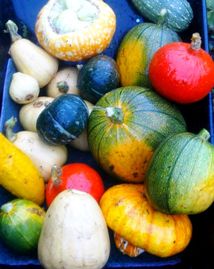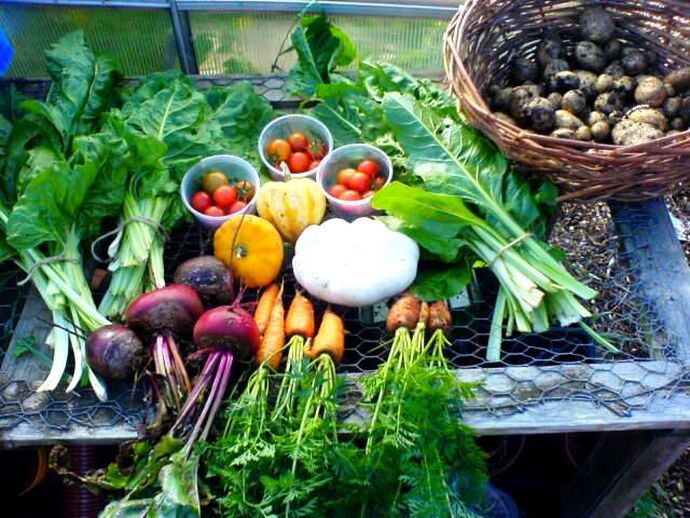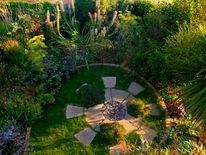Gardening 1:1 Lessons

If you would like a one to one gardening lesson to know how to look after your garden:
*See also Plant & Soil Health
- Specific pruning advice, showing you how and letting you know when to prune for best flowering and fruiting.
- Plant and soil improvement.*
- Grow your own fruit, veg , salad, herbs and edible or cut flowers.
- Propagation - growing from seed, taking cuttings, potting on.
*See also Plant & Soil Health
Grow your own

I can provide month-by-month, hands-on or Zoom tutorials, mentoring you through the growing season in your own garden, showing you how to grow your own tasty fruit, vegetables, salads, herbs and edible flowers to help provide you with optimum nutrition*.
Want to grow fruit and vegetables free from pesticides? Or something different you can't find in the shops?
I can advise you on how and when to prepare your plot, from propagation to planting out, maintenance to harvesting – it’s easy once you know what to do and when.
Aftercare advice
I can provide specific written gardening aftercare advice sheets, depending on the style of gardening and types of plants used.
*For Soil Biome and Gut Biome information, please see Biodynamic section.
Want to grow fruit and vegetables free from pesticides? Or something different you can't find in the shops?
I can advise you on how and when to prepare your plot, from propagation to planting out, maintenance to harvesting – it’s easy once you know what to do and when.
Aftercare advice
I can provide specific written gardening aftercare advice sheets, depending on the style of gardening and types of plants used.
*For Soil Biome and Gut Biome information, please see Biodynamic section.
Review: If you would like to book a gardening lesson or a grow your own session,
|
Gardening Monthly To Do's

April-May-June To Do’s
- Watch out for late frosts. Protect tender plants
- Water early and late to get the most out of your water, recycle water when possible
- Regularly hoe off weeds
- Open greenhouse vents and doors on warm days
- Check for nesting birds before clipping hedges
- Lift and divide overcrowded clumps of daffodils and other spring-flowering bulbs
- Prune spring shrubs, such as forsythia and chaenomeles, after flowering to keep them compact
- Plant out dahlia tubers and cannas after all risk of frost has passed
- Tie in the new shoots of climbing plants, including clematis, wisteria and honeysuckle, to their supports
- Continue sowing annuals, such as California poppies, into gaps in borders for colour from August into autumn
- Plant up hanging baskets, but keep in a greenhouse or porch for a few weeks to establish, before putting outside
- Apply liquid feed to tulips, daffodils and other spring bulbs to encourage a good display next year. (Do Not tie leaves together, cut yellowing leaves off)
- Plant out summer bedding and tender annuals, including sunflowers, cosmos and nasturtiums, after the last frost
- Remove faded spring bedding, such as wallflowers and forget-me-nots, once faded and add to your compost bin
- Check lilies and fritillaries for scarlet lily beetles and their larvae, as they can rapidly strip plants of all foliage
- Harden off tender plants raised indoors, but bring them back in at night to protect from late frosts
- Pinch out the shoot tips of bedding plants and young annuals to encourage bushier growth
- Earth up potatoes, covering the shoots with soil as they appear
- Sow sweetcorn in deep pots, so the young plants are ready to transplant into the garden in June
- Reduce snail populations by going on regular evening hunts, especially during damp weather
- Start sowing dwarf and climbing French beans, as well as runner beans, directly outdoors in warm weather
- Pick rhubarb stems as they develop, and water plants with liquid feed
- Start hardening off tender young plants, such as tomatoes and courgettes, ready for planting out in mild areas
- Sow batches of salad leaves and stir-fry crops every few weeks to provide continuous pickings
- Hang pheromone traps in apple and plum trees from May to July, to control pests
- Thin out seedlings from earlier sowings to ensure you get healthy, strong-growing plants
- Open fruit cage doors or lift some of the netting to ensure pollinating insects can get access to the flowers
- Remove all strawberry runners, so plants put their full energy into fruiting
- Keep plenty of fleece handy to protect young seedlings or fruit blossom, if late frosts are forecast
- Water thirsty crops such as tomatoes, cucumbers and courgettes regularly as the weather starts to warm up
- Tie the stems of indoor tomatoes, cucumbers and aubergines to canes as they grow
- Check plants regularly for pests, on shoot tips and the underside of leaves, and treat with biological controls
- Put up shading to lower daytime temperatures and reduce scorching
- Keep pricking out seedlings as soon as they get their first true leaves, to avoid overcrowding and fungal diseases
- Repot any houseplants that have become top heavy or pot bound into larger containers
- Start to harden off tender plants and bedding, ready for planting outside after the last frost
- Take cuttings from fuchsias, dahlias and pelargoniums
- Transplant tomatoes into growing bags or large pots, and tie their main stem to a cane or vertical wire for support
Design |
|







